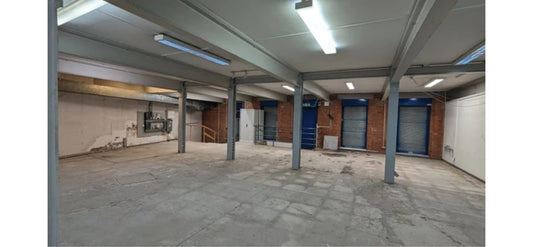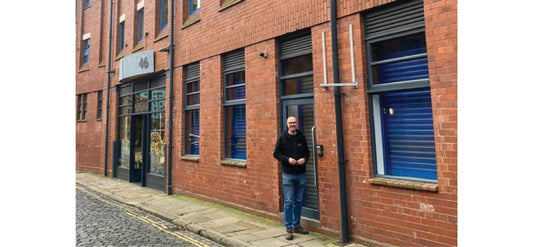We’ve been carrying out the arduous task of hunting out new wines to fill our already bursting shelves. Partly to keep things fresh, partly with our move in sight and partly because we get off on finding new juice for our lovely customers.
So, here’s some info about some of our newbies.
From the Iberian Peninsula

Agerre Txakolina
Some would argue that you only need one Txakoli, we might have agreed, then we tried this and given how popular our current Txakoli is we figured you might want another. It’s got the lovely salty spritz you’d expect but with an additional aromatic, floral finish. Very promising for the coming spring.
Gallina de Piel
David Seijas was head sommelier at El Bulli, the restaurant that was rated best restaurant in the world for 5 years, so you’d imagine he knows a thing or two about decent Spanish wine. We’ve taken on two of their range. Mimetic, is a Calatayud Garnacha Tinta (with the addition of 2% other grapes) which is aged for 6 months on fine lees in concrete tanks. Its got a lovely texture and a ripe, fruity flavour, just like a smoothy. The white, Ikigall, is made up of 85% Xarel-lo, 10% Malvasia, and 5% Muscat. Fresh and peachy, with a touch of orange blossom and fennel.
Museum Rosé
I like rosé, I do. Nolan loves it, but I like it. It’s not every day I drink one and go WOAH. This one made me go Woah. So much so that Nolan entered the Latitude group chat with this:

90% Tempranillo and 10% Verdejo. Castilla y León. Peach and apples in abundance. Beautifully balanced acidity. Juice.
Viñas del Cenit
Hailing from the D.O. Tierra del Vino de Zamora (translates to Land of Wine) which sits on the western end of the Duero river, just before it crosses into Portugal. Both wines are Field Blends (a viticulture term that I won’t delve into here, but it is cool, so feel free to ask about it). The Tradicíon is labelled as a Clarete and consists both red and white grapes from old vines. Constiesas undergoes reductive wine making processes that add a slight smokiness, long length and concentrated flavours.
Can’ Leandro La Vella
Meet Merseguera, a native grape of Valencia which is often produced for its resilience to drought rather than its flavour. Subsequently its rarely seen outside of Spain. In the right hands however this grape can shine and the hands of Gabriel and Alberto Sanchis Mestre at Can’ Leandro certainly know what they’re doing with this grape. It’s blended with a bit of Malvasia and Tortosi and results in a tropical wine with low acidity but plenty of salinity.
Some Italian Sunshine

Tenuta Santa Seraffa
A Gavi di Gavi from one of the acclaimed regions best producers, Araldica. These vineyards have obtained the SQNPI trademark which guarantees that each phase of production has complied with the strict parameters of integrated crop management. In other words, it is sustainable and eco-compatible, certified by an independent third party. Great tasting wine you can feel good about.
Monopolio Gambellara Classico
Stunning Garganega from the commune of Gambellara which sits just next to Soave in Veneto. The vines grow on ancient volcanic soil which extends the ripening period of the grapes and adds deep minerality to the juice. This wine is fresh and fun, with a touch of spice.
Vie di Romans
Granted, this isn’t an everyday wine, though I wish it was. This chardonnay from the commune of Mariano del Friuli is one to sipped and celebrated or saved for aging. It shows the vibrant acidity that this region is famed for as well as incredibly complex acacia and honeysuckle notes and deep, buttery characters from oak aging. It’s everything you’d want from a top quality white Burgundy, but is instead from a small, lesser known area in the north eastern reaches of Italy.
Donnafugata
We’ve been on the hunt for a new Sicilian winery for a while now, specifically one with an Etna Rosso DOC in their Portfolio. Enter Donnafugata, an old school winery embracing modern viticulture. The slopes of the Mount Etna are wonderfully mineral rich which aids the growth of the vines and flavour of the wines. This particular Etna Rosso comes from the north side off the volcano and is made up of the islands famed Nerello Mascalese grape which characteristically sits among other grapes like Nebbiolo and Pinot Noir.
We’ve also taken on a white from there range which is fruity, floral with notes of melon, wildflowers and I touch of mint.
And the Rest

Coterie – South Africa
From the Coastal Region of south Africa comes this Cabernet Franc & Malbec Blend from Wildeberg Vineyard. Whole bunch, natural fermentation is used to heighten the fresh flavours of the fruit and show off the effects of the coastal terroir. The crushed fruits come through on the nose with black cherry, wild plum and blackberry followed by with brown spice and star anise. The rich fruit continues on the palate and the spice gets bolder. This is a wine that fill the palate.
Pacheco Pereda – Argentina
Here’s two new wines from Mendoza in the form of an Organic Malbec and Organic Cabernet Franc. The Cabernet Franc is deep in colour with balsamic like aromas and full bodied, velvety tannins. It’s perfect for anything slathered in onion gravy. The Malbec grapes come from the Finca Alto Agrelo vineyard, situated around 1,200 metres above sea level in Luján de Cuyo. It’s structured yet fresh with hints of red berries, plums, and spice.
Piote – Vin de France
A Bordeaux that can’t be called a Bordeaux always fills us with intrigue. This is a 50/50 blend of Merlot and Malbec which farmed and vinified using biodynamic practices. It’s a bit funky and very fun. And, seen as I know you’re wondering, it can’t be called Bordeaux because of the shape of the bottle. Honestly.







